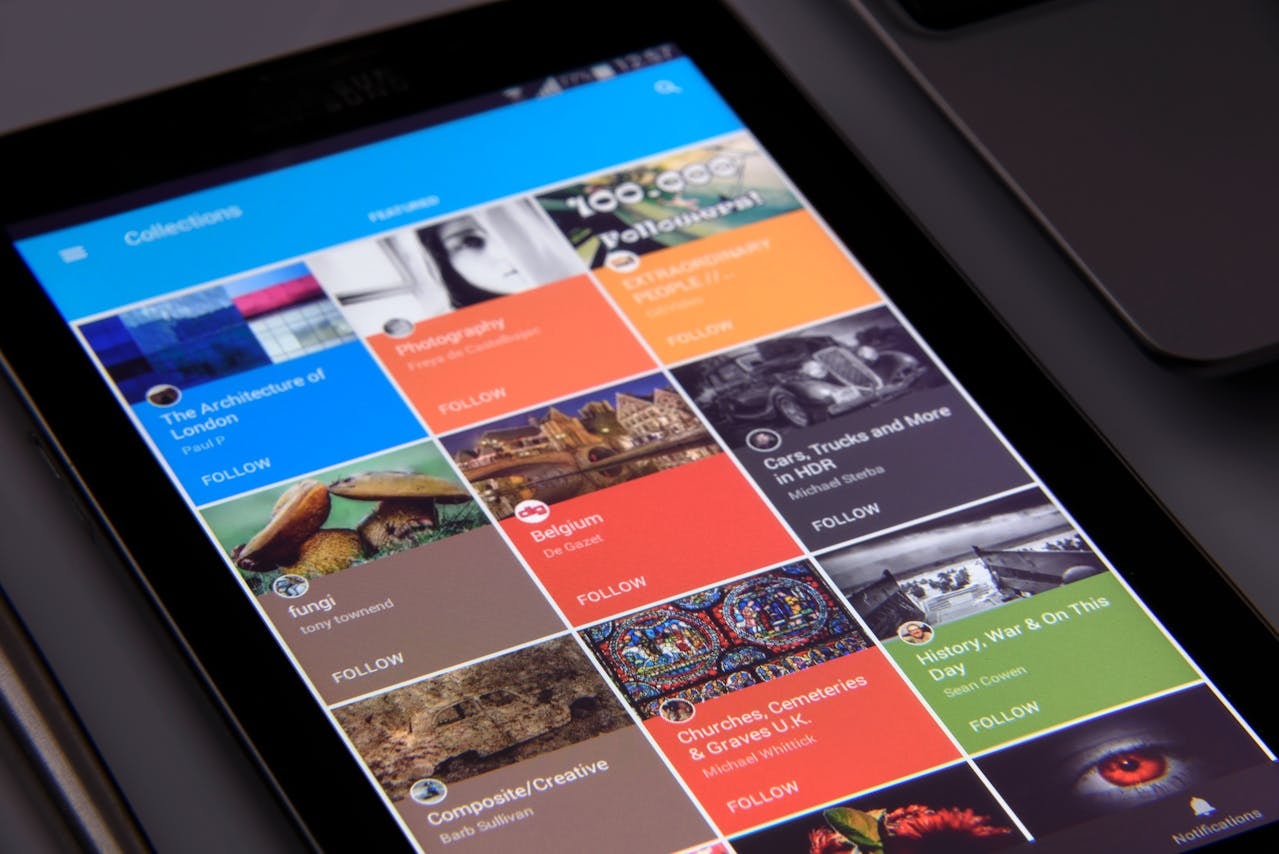Introduction: The Secret Sauce to Viral Content
Ever poured your heart into a blog post, hit publish, and heard nothing but crickets? You’re not alone. Creating blog posts that get shared isn’t just about writing—it’s about strategy, psychology, and a little bit of digital marketing magic.
With billions of blog posts published every year, standing out requires more than just great writing. You need an intentional approach that taps into what makes content go viral. It’s about understanding what drives people to share, leveraging social media platforms, and ensuring your existing blog posts and content is optimised for engagement and visibility.
Using a WordPress blog and the Publicize plugin can automate the sharing of new posts to social media platforms, making it easier to increase your online presence and streamline content distribution.
At Piri-Piri Marketing Hub, we’ve cracked the code on crafting blog content that gets people talking, sharing, and engaging with fresh content. Whether you’re a startup, a seasoned entrepreneur, or a digital marketing a whiz, this guide will walk you through every step of making your blog posts irresistible.
Why Some Blog Posts Get Shared While Others Don’t
Not all blog posts are created equal. Some skyrocket in shares, while others barely get noticed. The key difference? Engaging content that resonates with your audience.
Here’s what separates blog idea of a great post from blog idea of one that gets buried:
- Relevance – Does your blog content address a specific audience’s needs, interests, or pain points?
- Emotional connection – Does it evoke joy, surprise, inspiration, or urgency?
- Practical value – Does it offer actionable tips, insights, or solutions?
- Easy to consume – Is it structured for readability and scannability?
- SEO-optimised – Does it include relevant keyword research and on-page elements to rank on search engines?
By mastering these elements, you’ll transform your blog posts from overlooked content to viral sensations.
Understanding Why People Share Content
Before we jump into the nitty-gritty, let’s start with the why. What really makes sense when people hit that “share” button?
The Psychology Behind Sharing
People share blog content that:
- Makes them look good – Think insightful, cutting-edge, or funny content.
- Helps others – Educational and how-to guides are gold.
- Triggers an emotional response – Joy, surprise, inspiration, and even outrage work.
- Aligns with their identity – People share content that reinforces their values and beliefs.
- Strengthens relationships – Sharing is social currency; it connects people.
👉 Stat Check: According to the New York Times Customer Insight Group, 94% of people share content to improve the lives of others, and 84% share to support causes they believe in.
Different Types of Content That People Love to Share
Not all blog content is created equal. Some types of content naturally attract more shares than others. Here are a few content formats that tend to go viral:
- Inspirational Stories – Heartwarming, real-life success stories resonate deeply with readers and encourage shares.
- Informative & Educational Content – People love to share how-to guides, tutorials, and expert tips that solve problems.
- Data-Driven Insights – Statistics, case studies, and research-backed insights add credibility and are widely shared.
- Entertaining & Humorous Content – Funny memes, engaging quizzes, and lighthearted blogs perform well on social media platforms.
- Controversial or Thought-Provoking Content – Posts that challenge conventional wisdom spark debates and drive shares.
The Role of Emotions in Shareability
Content that evokes strong emotions—whether positive or negative—is more likely to be shared. Emotionally charged content sticks with readers, making them more inclined to pass it along to their networks. Here’s a breakdown of emotions that drive sharing:
- Awe & Wonder – Inspiring success stories, groundbreaking discoveries, and breathtaking visuals get shared widely.
- Joy & Laughter – Funny, relatable content spreads quickly across social media channels.
- Surprise & Shock – Unexpected facts or controversial takes grab attention and fuel engagement.
- Anger & Outrage – Content that challenges popular opinions or exposes injustices can generate heated discussions and viral sharing.
- Empathy & Compassion – Heartfelt human stories that highlight struggles, triumphs, or acts of kindness move readers to share.
How Social Proof Affects Sharing Behavior
Social proof plays a significant role in whether people decide to share a new blog post elsewhere. When content has already been shared widely, it encourages others to do the same. Strategies to increase social proof include:
- Displaying Share Counts – Showing the number of shares on a blog post signals credibility and popularity.
- Leveraging Influencers – Getting an endorsement from industry experts or influencers increases trust and reach.
- Encouraging User-Generated Content – Asking readers to share their thoughts or experiences makes them feel part of the conversation.
- Highlighting Testimonials – Featuring positive comments and reactions can drive further engagement.
By understanding the psychology behind why people share content and implementing these strategies, you can create blog posts that get shared and reach a new audience on various social media platforms.
Map The Audience Journey
Mapping the audience journey is a crucial step in creating effective content marketing strategies. It involves understanding the steps your target audience takes as they make a decision to solve a problem or seize an opportunity. By analyzing the audience’s journey, you can identify key touchpoints and create content that addresses their needs, motivations, and pain points at each stage. This helps you develop more effective and targeted content marketing, SEO, and PR strategies.
To map the audience journey, start by identifying the different stages your audience goes through, from initial awareness to conversion. Then, analyze the key touchpoints and pain points at each stage. Finally, create content that addresses these pain points and provides value to your audience.
For example, if you’re a digital marketing agency, your audience journey might look like this:
- Stage 1: Awareness – The audience becomes aware of a problem or opportunity.
- Stage 2: Research – The audience researches solutions to the problem or opportunity.
- Stage 3: Consideration – The audience considers different solutions and evaluates their options.
- Stage 4: Conversion – The audience makes a decision and takes action.
By mapping the audience journey, you can create content that addresses the needs and pain points of your audience at each stage, increasing the effectiveness of your content marketing efforts.
How to Create Blog Content That Resonates
Creating blog posts that get shared requires an approach that combines creativity, strategy, and technical optimisation. Here’s how to craft compelling content that captivates and converts new followers.
Crafting the Perfect Blog Structure
A well-structured blog post makes it easier for readers to digest and engage with the content. Use the following framework:
- A Captivating Headline – Your headline should grab attention and spark curiosity.
- A Strong Hook – The first few sentences should engage the reader immediately.
- Subheadings & Bullet Points – Break content into digestible sections.
- Visual Elements – Images, infographics, and videos enhance readability.
- Actionable Takeaways – Provide practical insights your audience can implement.
- A Clear Call-to-Action (CTA) – Guide readers on what to do next (share, comment, subscribe, etc.).
The Power of Storytelling
People connect with stories. Integrating storytelling into your and other bloggers’ blog posts and content makes it more relatable and engaging.
- Use personal anecdotes to establish credibility and authenticity.
- Incorporate customer success stories to illustrate real-world applications.
- Leverage case studies to demonstrate the effectiveness of your insights.
Writing with a Distinctive Brand Voice
Your brand voice should be consistent across all content. Whether it’s professional, witty, or conversational, ensure it reflects your brand identity.
- Know your audience – Tailor your tone to resonate with your target demographic.
- Be authentic – Readers appreciate sincerity and transparency.
- Inject personality – Avoid robotic content; make it engaging and dynamic.
Using Data and Research to Strengthen Content
Credibility is crucial when creating your own blog and content. Back up claims with relevant data, studies, and expert opinions.
- Include statistics from authoritative sources.
- Link to research papers and case studies.
- Use infographics and charts to visualize data-driven insights.
Formatting for Readability and Engagement
Most readers skim rather than read word-for-word. Optimise formatting to enhance user experience:
- Use concise paragraphs (3-4 sentences max).
- Utilise bold and italicised text to highlight key points.
- Incorporate bullet points and numbered lists to improve scannability.
Incorporating SEO Best Practices
A well-optimised blog post increases first page and visibility on search engines and drives organic traffic.
- Keyword Placement – Naturally integrate relevant keywords without stuffing.
- Meta Descriptions – Write compelling meta tags to improve click-through rates.
- Internal & External Links – Link to other relevant blog posts and authoritative sources.
- Mobile Optimisation – Ensure content is accessible and visually appealing on all devices.
Creating Interactive and Engaging Content
Encourage audience interaction to boost engagement and social media shares.
- Ask open-ended questions to prompt discussions.
- Embed quizzes, polls, and surveys to make content interactive.
- Encourage user-generated content by requesting comments and experiences.
Leveraging Social Media for Maximum Exposure
After publishing the same post, share this post and the link to your blog post across multiple social media channels:
- Facebook Groups & LinkedIn Groups – Engage with niche communities.
- Instagram & Pinterest – Utilise visual storytelling to attract more readers.
- Twitter/X – Leverage hashtags and discussions for increased reach.
- Reddit & Quora – Participate in discussions and subtly plug your content.
Additionally, use direct messages to share new blog posts with users who have previously engaged with your content or with new followers. This personal outreach can enhance the visibility and engagement of your blog posts on social media platforms.
Repurposing Blog Content for Greater Reach
To maximise visibility of guest posts, re-purpose a single post into old posts in the same post in multiple formats:
- Convert it into an e-book or whitepaper.
- Adapt it into a YouTube video script.
- Create a podcast episode around the topic.
- Summarise key takeaways in an email newsletter.
By following these strategies, you’ll craft quality content that engages your target audience, increases blog traffic, and encourages social media shares across various social media platforms throughout.
Nail the Headline
Your headline is one of the most important elements of your blog post. It’s what grabs the reader’s attention and entices them to read on. A great headline can make or break a blog post, so it’s essential to get it right.
Here are some tips for nailing your headline:
- Keep it concise – Aim for a headline that’s no more than 6-8 words.
- Make it descriptive – Use keywords that accurately describe the content of your post.
- Make it attention-grabbing – Use action verbs, questions, or statements that create curiosity.
- Use numbers – Incorporate numbers or statistics to make your headline more compelling.
For example, instead of using a generic headline like “The Benefits of Social Media Marketing,” try something more specific and attention-grabbing like “10 Ways Social Media Marketing Can Boost Your Business.”
The Best Blog Content Formats That Get Shared
Not all blog content performs equally when it comes to shares and engagement. Some formats are naturally more appealing and widely circulated than others. Here are the content types that have the highest likelihood of being shared:
1. How-To Guides and Tutorials
People love learning new skills and solving problems efficiently. A well-structured how-to guide or tutorial provides actionable steps that readers can follow, making it an ideal format for sharing. These guides are often bookmarked and referenced multiple times.
- Example: “How to Grow Your Blog Audience in 30 Days”
- Why It Works: It provides tangible value, solves a pain point, and establishes authority.
2. Listicles (List-Based Articles)
List-based articles are a favorite because they break down information into digestible chunks a few quick tips. Whether it’s a “Top 10” list or “7 Must-Know Strategies,” readers find these easy to skim and have a few quick tips to share.
- Example: “10 Proven Social Media Marketing Strategies to Boost Engagement”
- Why It Works: It’s structured, scannable, and appeals to a broad audience.
3. Infographics (Data Made Visual)
A well-designed infographic can transform complex information into a visually appealing format. People love sharing data-driven content that is easy to understand and visually striking.
- Example: “The Anatomy of a Perfect Blog Post [Infographic]”
- Why It Works: Visual content is highly shareable and performs well across social media channels.
4. Case Studies and Data-Driven Articles
Content that provides real-world results and data-driven insights builds trust and credibility. Readers appreciate seeing tangible evidence of strategies that work.
- Example: “How We Increased Blog Traffic by 300% in Six Months”
- Why It Works: It provides proof of concept and encourages readers to implement the same strategies.
5. Emotional or Inspirational Stories
People connect deeply with stories, especially those that evoke strong emotions such as inspiration, joy, or even frustration.
- Example: “From Zero to Viral: How One Blogger Built an Audience of 1 Million Readers”
- Why It Works: It humanizes content and makes it relatable.
6. Opinion Pieces and Thought Leadership Articles
Opinion-based content that challenges existing norms or presents bold perspectives on complex topic often sparks conversations and debates.
- Example: “Why SEO Is Dead (And What You Should Do Instead)”
- Why It Works: It encourages discussion, making it more likely to be shared among industry professionals.
7. Quizzes and Interactive Content
Engagement skyrockets when users can participate. Quizzes, polls, and surveys are highly interactive and often get shared as people invite their friends to participate.
- Example: “What Type of Content Creator Are You? Take the Quiz!”
- Why It Works: It’s entertaining and encourages users to interact and share results.
8. Controversial or Debatable Topics
Articles that take a strong stance on a trending topic tend to spark debates and generate significant engagement.
- Example: “Is Facebook Still Relevant for Businesses in 2024?”
- Why It Works: It fuels conversations and encourages people to share their own viewpoints.
9. Ultimate Guides and Comprehensive Resources
Long-form, detailed guides act as cornerstone quality content) that gets referenced repeatedly on other blogs and shared widely due to their thoroughness.
- Example: “The Ultimate Guide to Blog SEO: Everything You Need to Know”
- Why It Works: It provides immense value and is seen as an authoritative resource.
10. Trending and Timely Content
Content that aligns with trending topics or breaking news gains immediate traction because people want to stay informed and join the conversation.
- Example: “How AI is Changing Content Marketing in 2024”
- Why It Works: It taps into current discussions, increasing relevance and shareability.
11. Expert Roundups
Compiling insights from multiple experts creates a valuable resource that attracts shares from both industry professionals and general audiences.
- Example: “15 Marketing Experts Reveal Their Best Blogging Tips”
- Why It Works: It leverages multiple perspectives and increases the likelihood of shares from featured experts.
12. User-Generated Content and Community Engagement
Encouraging readers to contribute comments great ideas, insights, or guest blog posts fosters community involvement and increases engagement.
- Example: “Share Your Blogging Journey: A Community Round-Up”
- Why It Works: It builds a loyal readership and encourages organic sharing.
By leveraging these content formats, you can create content that is engaging, shareable blog content that resonates with your target audience and increases social media shares across multiple social platforms together.
How Social Media Impacts Blog Engagement and How to Use It to Boost Content
Social media is one of the most powerful tools to amplify blog content, increase engagement, and drive blog traffic. The right social media strategy can help your content reach new audiences, encourage discussions, and enhance brand visibility.
Why Social Media is Crucial for Blog Engagement
Social media provides an interactive platform where blog posts can gain traction beyond organic search. Here’s why it matters:
- Increases Visibility – Social media platforms expose your content to a wider audience beyond your regular website visitors.
- Enhances Engagement – Likes, shares, and comments build community and conversation around your blog post.
- Drives Referral Traffic – Each share is an opportunity for a new reader to land on your blog.
- Improves Search Engine Rankings – Social signals contribute to content relevance, which can boost SEO rankings.
How to Use Social Media to Boost Blog Content
Here are proven strategies to leverage social media effectively:
1. Choose the Right Platforms for Your Audience
Not every social media platform is ideal for every type of your other blog posts and content. Focus on where your target audience spends the most time:
- Facebook – Best for community building, Facebook Groups, and engaging discussions.
- Twitter/X – Ideal for quick insights, trending topics, and industry conversations.
- LinkedIn – Perfect for professional and B2B blog content.
- Instagram & Pinterest – Highly effective for visually appealing content, lifestyle blogs, and infographics.
- Reddit & Quora – Great for answering niche-specific questions and linking back to your blog post.
2. Optimize Social Media Posts for Engagement
When sharing a blog post on social media, keep these best practices in mind:
- Use compelling headlines – Grab attention with engaging copy.
- Add eye-catching visuals – Posts with images get 2.3 times more engagement.
- Incorporate hashtags – Use relevant keywords to increase discoverability.
- Ask a question – Encourage discussions in the comments section.
- Tag influencers or brands – Boost reach by engaging with industry leaders.
3. Schedule and Repost Content
Posting once is not enough. Use scheduling tools like Buffer, Hootsuite, or Sprout Social to:
- Repost content at different times to reach various time zones.
- Adapt the message for different platforms.
- Monitor engagement and respond to comments.
4. Engage With Your Audience
Social media isn’t just about broadcasting content—it’s about interaction. Foster engagement by:
- Replying to comments and encouraging discussions.
- Asking for opinions on the blog topic.
- Hosting live sessions or Q&A discussions to dive deeper into blog topics.
5. Leverage Paid Promotions
Boost engagement with targeted ads:
- Promote blog posts to your ideal audience via Facebook Ads, LinkedIn Ads, or Twitter promotions.
- Boost posts that are already performing well to gain additional reach.
- Use retargeting to re-engage visitors who have previously interacted with your content.
6. Collaborate with Influencers & Industry Leaders
Having influencers share your blog post can drastically improve its reach:
- Tag and mention influencers when relevant.
- Engage in guest blogging collaborations where influencers contribute to your blog.
- Encourage social media takeovers where industry experts share content on your behalf.
7. Turn Blog Content into Multiple Social Media Formats
To get the most out of a single blog post, repurpose it into:
- Instagram carousels summarizing key points.
- Twitter threads breaking down sections into engaging snippets.
- YouTube videos or reels presenting highlights.
- Pinterest graphics that direct back to the full blog.
By using these strategies, you can harness the power of social media to expand your reach, engage your audience, and drive consistent blog traffic.
How Piri-Piri Marketing Hub Helps Your Blog Posts Gain More Reach
At Piri-Piri Marketing Hub, we don’t just create the best content anywhere—we ensure it reaches the right audience and drives drive traffic and engagement to other blogs. Here’s how we help your blog posts gain more reach:
Optimised Content Strategy
We conduct keyword research to align your blog content with trending topics, ensuring it ranks higher on search engines.
Social Media Distribution
We leverage social media platforms to share your content effectively across multiple your social media marketing channels, from Facebook Groups to LinkedIn Groups.
Guest Blogging & Influencer Outreach
We connect with other bloggers and industry influencers for both guest blogging, guest posts,, link-building, and brand voice amplification.
Repurposing & Cross-Promotion
We take a single post and re-purpose it into multiple formats:
Turn blog posts into video scripts for a YouTube channel
Convert long-form guides related blogs into an e-book
Summarise key takeaways for Instagram and LinkedIn
Paid Promotion & Content Amplification
We run targeted ads to get more traffic to your posts and increase engagement through paid social media shares.
With Piri-Piri Marketing Hub, your own blog, posts won’t just exist—they’ll thrive. Ready to amplify your best content? Let’s chat!
Calls-to-Action: How to Get More Social Media Shares
Even the most valuable blog post won’t generate engagement without a strong call-to-action (CTA) that encourages sharing. A well-crafted CTA guides the reader toward taking action, whether it’s sharing the relevant content elsewhere, leaving a comment, or subscribing to updates.
1. Make It Easy to Share
Readers are more likely to share your new blog post, if the process is effortless.
- Add social sharing buttons – Place visible share buttons for Facebook, Twitter, LinkedIn, and Pinterest at the top and bottom of the post.
- Enable Click-to-Tweet – Highlight key quotes or insights that can be shared with a single click.
- Encourage copy-paste sharing – Provide a short, shareable summary with suggested captions for different platforms.
2. Use Direct and Persuasive CTAs
Your CTA should be clear, action-oriented, and compelling.
- Example: “Enjoyed this post? Share it with your audience to spread the knowledge!”
- Example: “Loved these insights? Click below to tweet your favorite takeaway!”
- Example: “If this helped you, pass it along to someone else who might benefit.”
3. Create a Sense of Urgency
Encouraging immediate action can boost shares and engagement.
- Example: “Join the conversation now before it’s too late!”
- Example: “Be the first to share this exclusive insight with your followers!”
- Example: “Trending topic alert! Share your thoughts before the conversation moves on.”
4. Leverage Community and Challenges
Make sharing feel like part of a movement by engaging your community.
- Create a branded hashtag – Encourage readers to use a specific hashtag when sharing.
- Launch a challenge or contest – Reward users who share your post with a feature or giveaway.
- Ask for reader contributions – Invite readers to comment with their thoughts and experiences, making them more likely to share the conversation.
5. Encourage Multi-Platform Sharing
Different audiences engage with content across various platforms and in different ways, so encourage sharing across multiple social platforms.
- Example: “Share this article on Twitter for quick insights, or post it to LinkedIn for in-depth discussion.”
- Example: “Pin this guide on Pinterest so you can refer back to it later!”
6. Incentivize Sharing
Offering something in return can motivate readers to share your post.
- Example: “Share this post and tag us for a chance to be featured in our next roundup!”
- Example: “Sign up for our newsletter and get exclusive content every week—share with a friend to unlock bonus material.”
7. Ask Engaging Questions
Encourage readers to respond in the comments and share the link to this post with their thoughts with their own network.
- Example: “What’s your favorite tip from this article? Share it on social media and tag us!”
- Example: “How have you used these strategies in your own blog? Tell us in the comments and share your story!”
By incorporating these strategic CTAs, you can maximize engagement, encourage social media shares, and amplify your content’s reach. Calls-to-action aren’t just about directing your audience—they’re about fostering community and participation.
Leveraging Email and Newsletters
Email and newsletters are powerful tools for promoting your blog content and driving traffic to your site. By leveraging email and newsletters, you can increase engagement, build relationships with your audience, and drive conversions.
Promote New Content in Email Newsletters
Promoting new content in email newsletters is an effective way to drive traffic to your site and increase engagement. Here are some tips for promoting new content in email newsletters:
- Use a clear and concise subject line that accurately describes the content of your newsletter.
- Use a compelling headline that entices readers to click on your newsletter.
- Use a brief summary or teaser to give readers a taste of what’s in your newsletter.
- Include a clear call-to-action (CTA) that encourages readers to click on your newsletter.
For example, if you’re promoting a new blog post on social media marketing, your email newsletter might look like this:
Subject: Boost Your Business with Social Media Marketing
Headline: 10 Ways Social Media Marketing Can Boost Your Business
Summary: Learn how to use social media marketing to drive traffic, increase engagement, and boost conversions.
CTA: Read the full post now and start boosting your business with social media marketing.
By following these tips, you can effectively use email and newsletters to promote your blog content, increase engagement, and drive traffic to your site.
Conclusion: Create Blog Content That Drives Blog Traffic
Creating blog content that consistently drives traffic isn’t a one-time effort—it’s an ongoing process of innovation, refinement, and strategic execution. The most successful blogs are those that don’t just publish content but actively work to engage their audience, encourage shares, and leverage multiple channels to maximize visibility.
Key Takeaways for High-Traffic Blog Content
To ensure your blog posts not only get shared but also sustain long-term traffic, keep these essential strategies in mind:
- Prioritize Quality Over Quantity – A well-researched, insightful, and value-packed blog post will outperform multiple low-effort posts.
- Understand Your Audience – Tailor your content to the pain points, desires, and interests of your specific audience.
- Leverage SEO Best Practices – Optimise your content with keyword research, meta descriptions, and internal linking to rank on search engines.
- Utilize Social Media Strategically – Promote your blog content across multiple social media platforms, including Facebook, LinkedIn, Twitter, and Pinterest.
- Repurpose Content for Different Formats – Turn blog posts into videos, infographics, podcasts, or newsletters to reach a broader audience.
- Encourage Engagement Through CTAs – Direct your readers to take action, whether that’s sharing, commenting, subscribing, or clicking through to another post.
- Update and Refresh Old Posts – Keep your existing content relevant by updating statistics, adding new insights, and optimizing for organic traffic.
The Role of Consistency in Blog Success
Success in blogging isn’t about quick wins—it’s about building credibility, trust, and engagement over time. Regularly publishing high-quality content, engaging with your audience, and staying up to date with industry trends will ensure your blog remains relevant and authoritative in your niche.
Future-Proofing Your Blog Strategy
To stay ahead, continually assess what’s working and refine your content strategy. Track your analytics, test different headlines, and experiment with new formats to see what resonates most with your audience. Blogging trends evolve, and adapting to these changes will keep your content fresh and share-worthy.
Final Thoughts
At Piri-Piri Marketing Hub, we believe that creating shareable, engaging blog content is both an art and a science. By applying the strategies outlined in this guide—understanding why people share content, crafting compelling stories, leveraging social media platforms, and optimizing for search engines—you can dramatically increase your blog’s reach and drive sustained blog traffic.
Are you ready to take your blogging strategy to the next level? Implement these techniques, experiment with new ideas, and most importantly, keep creating content that truly resonates with your audience.
Need expert guidance? Piri-Piri Marketing Hub is here to help you develop a content strategy that turns your blog into a powerful marketing tool. Let’s connect and make your content work for you!
Bonus: Free Blog Content Checklist
Want a cheat sheet? Here’s a quick checklist to ensure your blog posts are primed for sharing:
✅ Engaging headline
✅ Short paragraphs & scannable content
✅ High-quality visuals
✅ Strong emotional appeal
✅ Clear call-to-action
✅ Social media & email distribution plan
✅ Repurpose your existing blog posts & existing content for new audiences
Start implementing these quick tips today, and watch your blog traffic (and shares) soar! 🚀





























